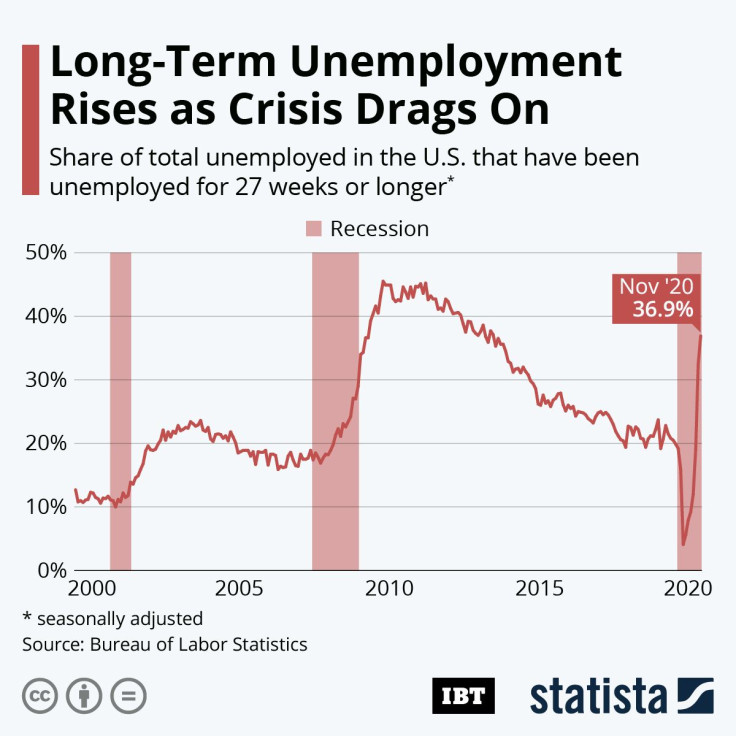Infographic: Long-Term Unemployment Rises As Crisis Drags On

As the coronavirus shows no sign of receding and several U.S. states are reinstating stricter measures to slow the spread of COVID-19, hopes for a holiday-season job surge to end the year on a high note are quickly fading. According to the latest jobs report, published by the Bureau of Labor Statistics on Friday, job gains in the United States slowed to a trickle in November, as gains in transportation, warehousing, health care, and professional services were partly offset by jobs lost in government and retail trade.
Meanwhile, the level of long-term unemployment continued to rise, approaching levels last seen in the aftermath of the financial crisis. According to the BLS, almost 4 million Americans have been unemployed for 27 weeks or longer, indicating just how difficult it’s been for those who lost their job in the spring to find work again. As the following chart shows, more than 1 in 3 jobless persons in the U.S. has been unemployed for at least 27 weeks now, up from a pre-pandemic average of around 20 percent.
These numbers are especially significant these days, as Congress has yet to agree on a follow-up plan to the CARES Act, which extends unemployed benefits beyond the 26-week cut-off for most state unemployment insurance programs. Unless a compromise is soon reached, millions of Americans could lose their only remaining income, when the emergency aid provided by the CARES Act expires at the end of December.



















